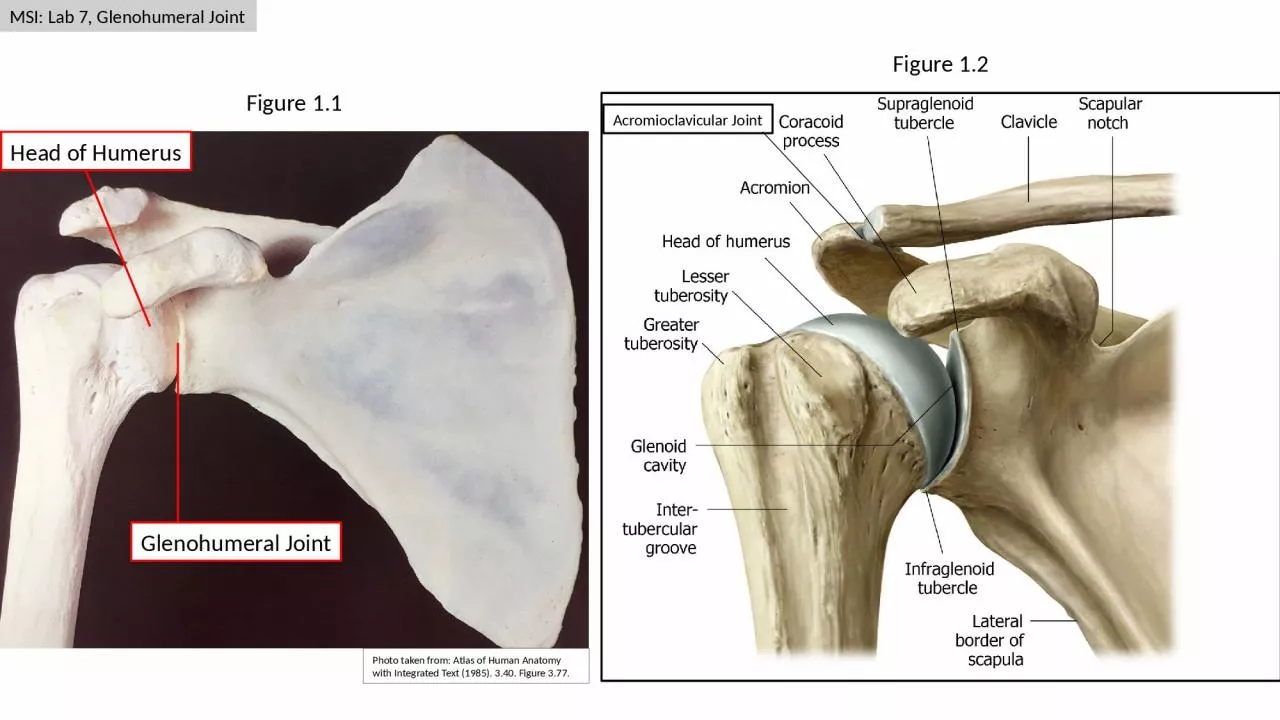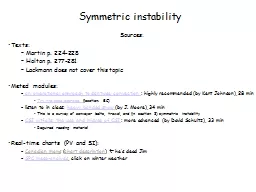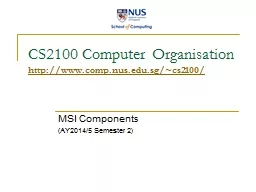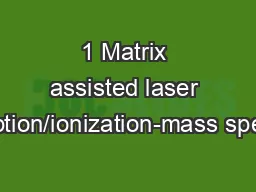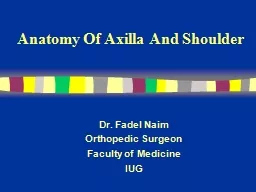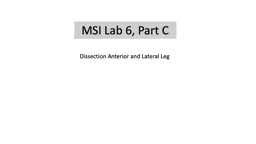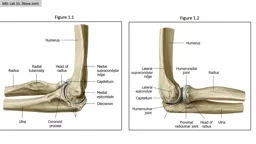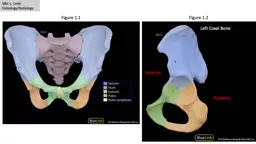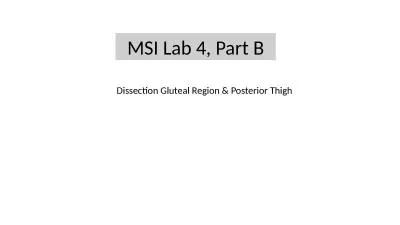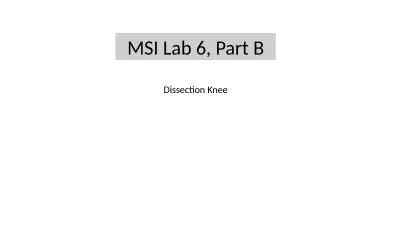PPT-MSI: Lab 7, Glenohumeral Joint
Author : DreamCatcher | Published Date : 2022-08-04
Figure 12 Figure 11 Glenohumeral Joint Head of Humerus Photo taken from Atlas of Human Anatomy with Integrated Text 1985 340 Figure 377 Acromioclavicular Joint
Presentation Embed Code
Download Presentation
Download Presentation The PPT/PDF document "MSI: Lab 7, Glenohumeral Joint" is the property of its rightful owner. Permission is granted to download and print the materials on this website for personal, non-commercial use only, and to display it on your personal computer provided you do not modify the materials and that you retain all copyright notices contained in the materials. By downloading content from our website, you accept the terms of this agreement.
MSI: Lab 7, Glenohumeral Joint: Transcript
Figure 12 Figure 11 Glenohumeral Joint Head of Humerus Photo taken from Atlas of Human Anatomy with Integrated Text 1985 340 Figure 377 Acromioclavicular Joint Figure 14 Figure 13. 5 Years. ! Plus…. Lumen Maintenance. During warranty period lamp is warranted against lumen loss of its light output after 15%. . Other LED manufacturers only warranty their lamps after 30% light loss.. Sources:. Texts:. Martin p. 224-228. Holton p. 277-281. . Lackmann. does not cover this topic. Meted modules:. an . operational approach to slantwise convection . : highly recommended (by Kent Johnson), 28 min. http://www.comp.nus.edu.sg/~cs2100/. MSI Components. (. AY2015/6 . Semester . 1). CS2100. MSI Components. 2. WHERE ARE WE NOW?. Number systems and codes. Boolean algebra. Logic gates and circuits. Simplification. Presented by:. . Muhammadi. . Ph.D. Scholar. Department of Botany, PMAS-UAAR, RWP.. 2. Introduction. Metabolomics. has largely addressed through the development of sophisticated separation techniques, mass spectrometry approaches, and computational tools . Why is starch agar used?. -To see if saliva was present and broke down the starch.. Positive control . –used to show what the change looks like. Negative control. – used to what no change looks like. Dr. . Fadel. . Naim. Orthopedic Surgeon . Faculty of Medicine. IUG. SURFACE ANATOMY. ACROMION . CLAVICLE. DELTOID ( IM INJECTIONS). HUMERUS. BICEPS MUSCLE. BICIPTAL GROOVE. BRACHILA PULSE( BLOOD PRESSURE). Figure 1.1. Figure 1.2. Figure 1.3. MSI: Lab 6, Part C. Superficial Fibular N.. Lateral Cutaneous branch. of Superficial Fibular N.. Medial Cutaneous branch. of Superficial Fibular N.. Photo taken from: Color Atlas of Anatomy: A Photographic Atlas of the Human Body (2006). p. 493. Right leg and dorsum of foot, cutaneous nerves and veins (lateral aspect).. Figure 1.3. Figure 1.4. Radius. Ulna. Humerus. Annular . Ligament. Radial. Collateral . Ligament. Capitellum. /. Capitululm. Photo taken from: Color Atlas of Human Anatomy (1997). p. 122. Left elbow joint and proximal radio-ulnar joint, B from the lateral side.. MEGHA DEY. Linux Kernel Engineer. AGENDA. Evolution of I/O virtualization. Scalable I/O Virtualization (SIOV) architecture. The interrupt story so far. Need for Interrupt Message Store. Interrupt Message Store advantages. Figure 1.1. Figure 1.2. Anterior. Posterior. Left . Coxal. Bone. Ischiopubic. . Ramus. Acetabulum. Greater . Sciatic . Notch. Lesser Sciatic . Notch. Obturator Foramen. Figure 1.3. Lunate Surface (Green). Figure 1.1. Figure 1.2. MSI: Lab 4. Part A. Figure 1.3. MSI: Lab 4. Part A. Figure 2.1. Figure 2.2. ischial tuberosity. MSI: Lab 4. Part A. Sural N.. Tibial. N.. Common . Fibular N.. Lateral Sural . Figure 1.1. MSI: Lab 6, Part B. Figure 1.2. Figure 1.3. MSI: Lab 6, Part B. Medial View. Figure 1.4. Figure 1.5. Pes . Ansirinus. Semitendinosus m.. Sartorius m.. Gracilis. Tendon. Medial view. Photo taken from: Color Atlas of Anatomy: A Photographic Atlas of the Human Body (2006). p. 455. Flexors of the right thigh, superficial layer (dorsal aspect).. Meichin. Hsieh, Jordan . Kalitz. 2019 NAACCR Annual Conference. June 13, 2019. Utilization of Microsatellite Instability Testing and Associated Factors among Colorectal Cancer Patients . Background. MSI Awareness Education for Retail. What are MSI?. MSI are soft tissue injuries that are caused or made worse by work. MSI may be caused by a single event. For example, straining a muscle during heavy lifting.
Download Document
Here is the link to download the presentation.
"MSI: Lab 7, Glenohumeral Joint"The content belongs to its owner. You may download and print it for personal use, without modification, and keep all copyright notices. By downloading, you agree to these terms.
Related Documents

